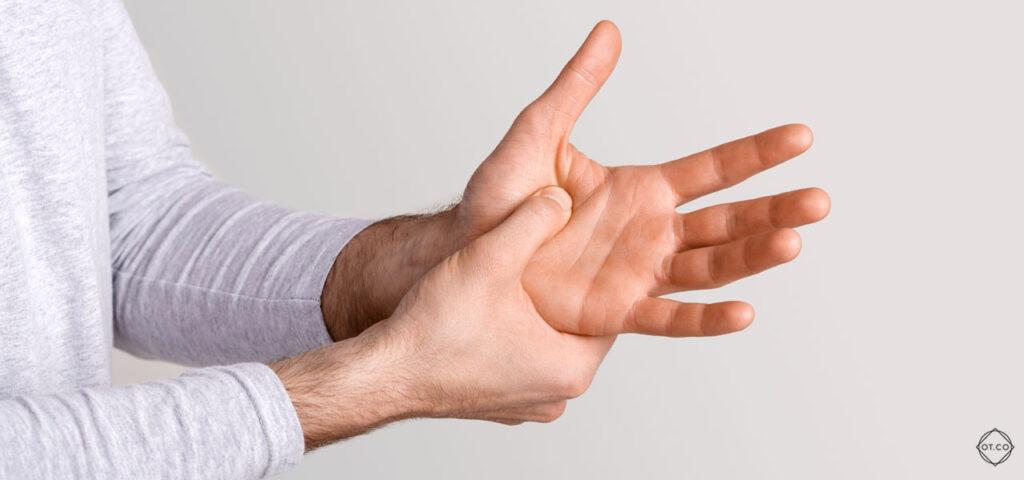TL;DR:
- Snapping finger is inflammation of the tendon sheath, causing pain, difficulty straightening fingers (often the ring finger and thumb), swelling, and a snapping sensation.
- Pain initially occurs in the morning and worsens over time; associated with conditions like rheumatoid arthritis, diabetes, and hormonal changes during pregnancy.
- Causes include repetitive hand strain (e.g., playing instruments) and mechanical injuries.
- Mild cases may improve with physiotherapy and anti-inflammatory treatment; severe or persistent cases often require minimally invasive surgery.
- Surgery involves local anesthesia, cutting/removing the affected tendon sheath, and may use ultrasound-guided techniques.
- Recovery: wear a sling for a few days, rehab starts after 10 days, full recovery in six weeks.
- Surgery is effective and improves mobility significantly.
Snapping finger, also referred to as snapping finger, is an inflammation in the hand that causes pain, problems with bending and straightening fingers, shooting fingers and difficulty in performing simple daily activities. However, this problem can be gotten rid of with a minimally invasive surgical procedure and proper rehabilitation, which will relieve you of toe pain when bending.
Snapping (snapping) finger – what is it?
Snapping finger, also known as snapping finger, is a symptom resulting from inflammation of the tendon sheath of the flexor finger tendon. As a result of the inflammation, the tissue surrounding the tendon thickens, making it difficult for the tendon to function properly and move during finger movement. The symptoms of the disease are usually problems with straightening the finger and pain in the toes when bending, which initially occur mostly in the morning, but as the disease progresses, the problem can occur every time the fingers are bent. Patients then have to help themselves with the other hand to straighten the finger. Another symptom indicating inflammation is swelling at the base of the fingers, as well as pain and a characteristic snap when trying to straighten the finger. snapping finger Slamming finger most often occurs in the area of the ring finger and thumb, but pain can also affect the middle and index fingers. The disease most often affects only one finger of the hand, but there are cases when the problem with finger flexion occurs in the whole hand or both hands at the same time. The causes of the disease are still not fully known, but it is suspected to be caused by previously suffered mechanical injuries and repeated overloading of the fingers of the hand, such as when playing instruments, knitting or weaving. Shaking finger also occurs more frequently in people suffering from rheumatoid arthritis (RA), diabetes, gout, amyloidosis and mucopolysaccharidosis. The condition also relatively often affects pregnant women due to the intense hormonal changes that occur in their bodies. ** Pain in the index finger**, middle finger, ring finger or thumb can fortunately be overcome in a minimally invasive manner.
Finger shooting – surgery and treatment.
There are several methods of treating a snapping finger, but surgery usually proves to be the most effective. However, if the inflammation affects only one finger and does not last long, you can try treatment through appropriate physiotherapy and anti-inflammatory treatment. When this does not bring the desired result, then it is worth considering minimally invasive surgery. This procedure is recommended especially in cases of:
- a problem with several latching fingers,
- inflammation lasting more than a few months,
- comorbidities such as RA, diabetes, gout and other conditions mentioned earlier.
The surgical procedure of shattering finger is performed under local anesthesia. In addition, a special tourniquet is placed on the patient's hand to stop excessive bleeding during the operation. The essence of the procedure is to surgically cut or, in some cases, remove the sheath of the finger flexor tendon that has been lesioned. The aim is to restore freedom of movement in the affected fingers. This procedure is one of the minimally invasive ones and does not require a large skin incision. Sometimes, however, it is necessary to extend the surgery for better visibility of the tendon. Sometimes the procedure is also performed with a thick injection needle using ultrasound guidance, which shortens the recovery period. However, this procedure has a higher risk of recurrence of unpleasant discomfort. If the traditional method is chosen, stitches are placed over the resulting incisions.
Snapping finger – results of treatment.
Immediately after the surgical procedure is performed, it is recommended to wear a sling on the hand for several days, which helps reduce swelling and pain. Although the sutures are removed about 10 days after surgery, it is recommended to spare the hand for up to six weeks. For satisfactory results, it is also crucial to start rehabilitation and independent exercises at home as soon as possible, which gradually restore mobility in the operated finger. According to our patients, the operation significantly improved their well-being and smoothness of movement of their yards, and the recovery period was relatively short, so it is worth opting for this method and getting rid of shooting fingers once and for all.
Conclusion
Treating snapping finger is straightforward and effective if addressed properly. Early symptoms like pain and reduced finger movement shouldn’t be ignored. Surgery, paired with proper rehabilitation, can restore full function quickly. Minimally invasive options make recovery manageable and results highly satisfying for most patients. Don’t let snapping finger disrupt daily life—modern solutions exist to fix it efficiently. Trust your care to skilled professionals, and regain pain-free use of your hands fast. The right treatment can give you lasting relief and improved quality of life.






